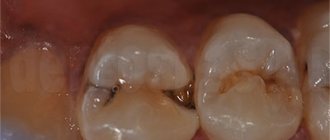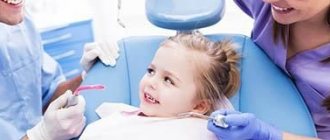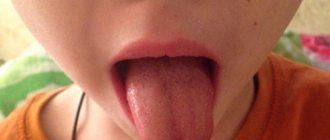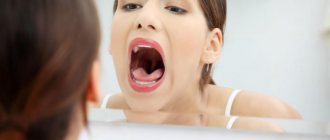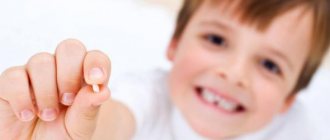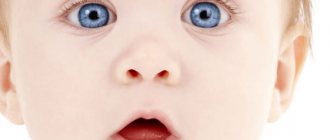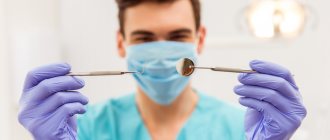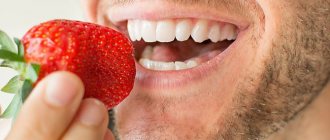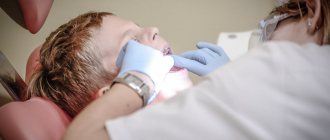One of the most common reasons for patients visiting dental clinics is traumatic damage to teeth and surrounding tissues. At any age, a tooth bruise can occur - a painful injury, which, despite the discomfort, at first looks quite harmless. Subsequently, it often turns out that the pain does not subside, and the bruised tooth begins to react to hot or cold. This usually means that the neurovascular bundle—the dental pulp—is damaged, and a visit to the dental office is necessary.
Even a very careful adult can get a severe bruise to a gum or tooth (for example, by not calculating the movement and hitting himself with a spoon or glass). What can we say about kids who are constantly on the move and often fall, hitting their teeth on various objects. As a result, enamel cracks, root fractures, dislocations and other injuries occur. In the ICD (International Classification of Diseases), chapter 29 is devoted to dental injuries, which describes the consequences of single or multiple mechanical impacts leading to disruption of the integrity of teeth and surrounding tissues.
Main causes of pathology
In fact, the main reason why a bruise occurs is mechanical impact on the maxillofacial apparatus from the outside. Here's a list of what usually causes the problem:
- careless handling of cutlery and dishes: most often a blow with a spoon, glass,
- a bruise occurs and teeth hurt after a blow to the jaw and face received due to non-compliance with safety regulations at work, a fight, a fall, a sports or children's game, a traffic accident,
- bad habits: some researchers claim that you can get injured by cracking nut shells, opening bottles with your teeth, biting threads and even biting your nails,
- too traumatic manipulations carried out by an unqualified doctor during dental treatment and removal of adjacent elements of the row.
On a note! According to the International Classification of Diseases (ICD), a bruise of a permanent or primary element is one of the types of injuries received as a result of mechanical impact and leading to closed damage to a tooth without compromising the integrity of its tissues.
Prevention
To prevent tooth mobility, you must maintain careful oral hygiene and use brushes and pastes recommended by your doctor. Don’t forget to floss, irrigate, and rinse your mouth after eating. Regular visits to the dentist (every 6 months) for a preventive examination and professional cleaning will help identify pathology at the initial stage, avoid complications, and maintain a healthy smile.
Author of the article Voznyuk Vladimir Aleksandrovich Maxillofacial surgeon-implantologist of the highest category
Work experience: 28 years.
Statistics data
Most often, a tooth bruise occurs in adults who play sports. This problem accounts for 1.5% of the total number of injuries in the permanent dentition. But the main record holders for those diagnosed with this pathology are children. Little fidgets are constantly in motion, falling, hitting various objects, and all this against the background of insufficiently developed coordination. A bruise of a baby tooth is detected in 2.5% of situations among all traumatic injuries (fractures, cracks, dislocations).
Which elements of the series are more likely to be injured than others? The vast majority of people get a bruise on their front tooth - an incisor or canine. It is these elements of the series that are at the forefront of the smile and take the brunt. They are also thinner and more fragile than their chewable counterparts.
What indicates pathology: characteristic signs
A bruise is an insidious pathology, since immediately after it you may not notice any external manifestations of the injury at all. However, doctors warn that when a blow or bruise occurs, a negative effect on periodontal tissue occurs, their rupture and internal bleeding may occur, and in some cases, the neurovascular bundle, that is, the pulp, is also partially or completely damaged.
How can you independently determine whether you have a problem? We list the main symptoms that should alert you and become a reason for mandatory consultation with a doctor.
- Teeth hurt after being hit. The unpleasant sensations are long-term, aching in nature, intensified by biting and pressing on the crown while chewing food, or by tapping on injured tissues. Acute pain may occur from eating hard, cold and hot, as well as sour and sweet foods.
- After the impact, my teeth became loose. Usually there is slight mobility of the damaged element of the row. It seems to a person that the incisor or fang is swaying and has begun to move to the side.
- The coronal part of the bruised unit has changed its color. Pink color indicates rupture of pulp vessels and internal hemorrhage. If a tooth turns black after an impact, this may indicate a violation of its nutrition and an inflammatory process occurring in the depths of the tissues. If it turns gray, then the symptom signals necrotization and death of the nerve.
Important! As a result of the bruise, partial or complete rupture of the pulp may occur. In the first case, the process is considered reversible, while in the second it is irreversible and requires invasive treatment methods. Only a doctor can find out what problem a particular patient is facing.
- Not only the tooth aches, but also the gums surrounding it. In this case, the bruised soft tissues and mucous membranes swell and turn red. A hematoma may appear.
- Some patients notice numbness in their teeth after an impact, which indicates severe damage to the nerve endings.
“Even if there are no external manifestations of injury, you should still consult a doctor who will conduct a thorough examination. Only on the basis of x-rays can we say for sure whether the patient will require treatment. If you hesitate, you can completely lose a tooth, even one that looks completely healthy,” says dentist-therapist Marina Igorevna Tarabanovskaya.
Symptoms
The symptoms accompanying a tooth bruise are easy to recognize. If a person bruises a tooth, it hurts quite noticeably, and over time the pain only intensifies, especially with pressure on the damaged area and chewing food. The following symptoms are also present:
- When the neurovascular connection is ruptured, hemorrhage occurs into the pulp tissue, due to which the enamel quickly turns pink;
- The crown may darken;
- When bruised, the tooth becomes loose, although its mobility is relatively small;
- At the site of impact on the soft tissues of the gums, swelling, hyperemia, deformation of individual areas of the mucous membrane, and the formation of hematomas may occur;
- If there is a very strong impact, ligament rupture, joint damage, or even a fracture of the alveolar process of the jaw may occur where the striking object hits the jaw. In this case, it will be difficult and painful for the patient to open and close the jaw. Such damage can only be diagnosed with an x-ray.
Complications after injury
If the tooth turns gray or turns black after an impact, then this is serious evidence that the nerve is affected. The pulp can gradually die off, causing the row unit to become lifeless, fragile and defenseless against any external influence. In addition, a change in the shade of an incisor or canine leads to a serious violation of the aesthetics of the smile and the acquisition of complexes.
If, after a blow, an adult or child has a bruised nerve or periodontal tissue, this can lead to dental diseases such as traumatic pulpitis and periodontitis. In the absence of timely measures to treat these pathologies, you may encounter more dangerous complications: cyst and granuloma, gumboil, abscess.
As mentioned above, in the event of a blow or bruise, the main impact falls on the incisors and fangs, which themselves are very thin and fragile and quickly lend themselves to the formation of chips and cracks. With mechanical influence from the outside, the anterior units of the row can become more sensitive, susceptible to caries and other destructive processes, react with pain to the temperature and hardness of food, and ache when touched or any mechanical impact.
Important! The saddest consequences of not seeing a doctor in a timely manner: neglect of the clinical case, the impossibility and inexpediency of saving the damaged element, the need to remove it.
In children, a bruise can lead to the same consequences as in adults. In addition, the lack of therapeutic measures in relation to injured primary deciduous units can cause damage to the rudiments of permanent teeth and the formation of pathologies of permanent occlusion.
Consequences
Not a single injury for a person passes without a trace. Even if you managed to avoid obvious complications at the time of treatment, there is always a possibility of their occurrence in the future. For a tooth bruise, the consequences are also no exception. One of the most common complications is the gradual death of pulp tissue if the pulp was damaged by an impact, but during treatment, identifying its viability gave positive results. With necrosis, the nerve endings in the tooth cavity are damaged, which inevitably leads to inflammation.
Another most common consequence of a bruise is staining of the enamel. Most often, it occurs in a short time after injury, since fluid from damaged vessels enters the dentinal tubules and stains the walls. In addition, the enamel may simply darken due to a lack of nutrients supplied through damaged fibers and tissues.
More serious complications that arise over time are also possible. This may be the development of a cyst, periodontitis, or a stop in root development in children in both milk and permanent teeth.
The likelihood of tooth loss after injury: what doctors say
Can a tooth fall out after a blow? This situation is rare, but it cannot be excluded if the supporting ligaments and periodontal tissues are severely damaged, and the person does not seek dental care for a long time.
More often, after a blow, the tooth hurts and only wobbles a little, and the gums around it are red and swollen. But even in this case, you cannot relax. According to doctors, against this background traumatic gingivitis and periodontitis can develop. These diseases, with inadequate treatment and careless attitude to oral hygiene, progress and become generalized (spread to the entire range). Advanced periodontitis is also fraught with loosening and loss of moving elements.
A tooth started to loosen: how to save it at home
If a tooth is loose, you can save it at home (as part of complex therapy). In the initial stages, massage of the gums and the area around the loose tooth helps. It is important to perform it systematically (twice a day for 3–4 minutes). Problem areas are massaged in a circular motion without causing excessive stress. After each massage session, it is necessary to rinse your mouth with a decoction of medicinal herbs (for example, chamomile or sea buckthorn).
Also, at home you need to use gels that relieve inflammation and improve blood circulation in tissues (as prescribed by a doctor) and adjust your usual diet (add foods rich in vitamins and minerals).
Diagnosis of pathology in the dental office
If your tooth hurts or becomes numb after an impact, or if it has moved, you should immediately consult a dentist. The specialist will conduct an external examination and palpation. The doctor will also definitely send you for an X-ray examination to determine the condition of the tissues and their integrity, detect internal damage, and differentiate the bruise from other possible injuries (fracture, dislocation, crack). In order to check the condition of the pulp, to identify traumatic pulpitis and periodontitis, electroodontic diagnostics (EDD) can be performed.
Pregnancy
During pregnancy, hormonal changes occur in a woman's body, which significantly affect the deterioration of blood supply to the mucous membranes. The child takes away the mother's calcium supply, which significantly worsens the condition of the mother's teeth. Also, calcium leaching occurs during toxicosis. As a result of these processes, the gums begin to bleed and become inflamed, periodontal pockets form where food remains accumulate, and teeth can begin to wobble. In order to strengthen and restore the oral cavity, expectant mothers should visit a dental clinic. The specialist will prescribe a set of preventive and therapeutic measures that will strengthen loose teeth. Such events include:
- professional dental hygiene;
- recommendations for a proper diet, which includes the mandatory consumption of foods containing large amounts of calcium (fermented milk products, vegetables, fruits, fish and meat);
- prescribing additional intake of mineral and vitamin complexes;
- the use of additional oral care products, such as rinses, flosses, etc.
What treatment measures do doctors usually prescribe?
In the absence of serious damage
Teeth hurt after a blow: what to do? If, as a result of the examination, it becomes clear that the injury did not bring any serious consequences, then the patient is prescribed the following therapeutic treatment:
- painkillers and syrups for pain relief: read about the best of them in the feature article on the website,
- cold compresses to relieve swelling and resolve bruises,
- treatment of inflamed gums with antiseptic solutions and anti-inflammatory ointments: you can rinse your mouth with Chlorhexidine and Miramistin, use topical gels, for example, Cholisal,
- gentle diet: the bruised element of the row should be at rest, which is why during the rehabilitation period (on average it takes up to 3-4 weeks) it is not recommended to eat hard and hard food, or chew on the side of the jaw that has been subjected to mechanical stress. You should not eat cold or hot, as this can cause pain and have an irritating effect. It is better to eat soft and pureed foods, ground in a blender, as well as liquid foods at a neutral temperature,
- physiotherapy: for rapid healing of damaged tissues, laser and magnetic therapy, UHF (ultra high frequency) therapy are usually prescribed. The course consists of 10 procedures of 5 minutes each.
On a note! For 2-3 months after a bruise or blow, it is recommended to carry out dynamic observation even in cases where no serious damage has been identified. During the process[1] of observation, the doctor can adjust treatment tactics and decide on the use of non-invasive and invasive methods. Subsequently, adults should visit the dentist 2 times a year and children 3-4 times a year for preventive examinations.
For pulpitis and periodontitis
How to save a tooth after an impact? If the injury leads to damage to the pulp, the development of pulpitis and periodontitis, then specialists perform trepanation of the crown, that is, they open it. Doctors gain access to the root canals, remove the nerve if necessary, carry out treatment, anti-inflammatory and antiseptic treatment, and filling. All procedures are performed under local anesthesia.
When changing shade
If a tooth has darkened after an impact, the patient is offered intracanal bleaching, which allows the element of the row to be restored to its former whiteness. However, the procedure is performed only on pulpless units, that is, when the nerve has been removed from them. What to do if the pulp was saved? You can hide the defect and restore the aesthetics of the anterior incisors and canines with composite restorations, veneers and lumineers, crowns made of ceramics and zirconium dioxide.
A change in the shade of the crown often occurs due to incomplete rupture of the pulp, which causes a hematoma to form in the tissue. According to some studies, the crown acquires its natural color after the hematoma resolves, so in the first days after the injury, patients are often simply prescribed dynamic observation.
With mobility of the bruised unit
How to ensure complete rest and strengthen a tooth after an impact if it begins to wobble? For this purpose, doctors may install temporary immobilization and splinting devices for you. The splints will fix the movable unit in a stable position, unite it with healthy ones, help the correct distribution of the chewing load and allow therapeutic treatment until damaged or torn ligaments are restored. They need to be worn from several weeks to several months. During the period of immobilization, it is very important to follow a gentle diet and give up solid food.
On a note! If a row of milk units is bruised, splints are not placed, and rest is provided to the moving element using mouth guards, which temporarily separate the bite and prevent direct contact with the antagonist teeth. To reduce the load on the bruised element, children also undergo grinding of the cutting edge of the antagonist crown.
For increased tissue sensitivity
Often after a bruise, increased sensitivity of hard tissues occurs. They begin to react to food temperature and mechanical stress, and then experts recommend a course of fluoridation or remineralization of the enamel. In the process, products with minerals are applied to hard tissues, promoting strengthening and increasing resistance to caries and any external factors.
When chips and cracks form
Often, a blow or bruise to the incisors and fangs leads to the formation of cracks and chips on them, and to the destruction of hard tissues. In these cases, to restore the aesthetics, original form and functionality of the damaged elements, patients undergo artistic restorations with composite materials, and microprostheses (veneers and lumineers) are installed. If the destruction is extensive, then prosthetic crowns are prescribed.
Treatment methods
The treatment regimen and the scope of medical manipulations are selected according to the patient’s somatic status. The inflammatory process is eliminated, professional oral hygiene is performed, and antimicrobial therapy is prescribed. Treatment of mobility is aimed at eliminating the underlying cause that led to the weakening of the ligamentous apparatus. If it is periodontal disease, then infection and inflammation are treated; in case of malocclusion, orthodontic treatment is carried out; in case of injury, a temporary splint is applied.
Treatment includes various methods, including grinding crowns, normalizing occlusion, splinting, and prosthetics.
- Thanks to bite correction, the load on the periodontium is normalized, the teeth occupy a more stable position in the sockets.
- Wearing a special mouthguard that prevents clenching or grinding of the teeth will help strengthen loose teeth in the gums during bruxism or clenching.
- In case of physiological changes, hormonal levels and nutrition are corrected, vitamin therapy is carried out, and the immune system is strengthened.
- In case of injury, a special device is installed on the dentition - a splint, which helps to fix loose units and correctly distribute the load between healthy and injured teeth.
In some cases, it is impossible to save a loose tooth. Direct indication for extraction
is mobility of 3-4 degrees with loss of bone tissue by 70%, atrophy of the jaw bone by more than 50% with damage to the dental pulp. In such situations, it is advisable to remove the loose tooth, preserving the bone tissue for subsequent implantation.
